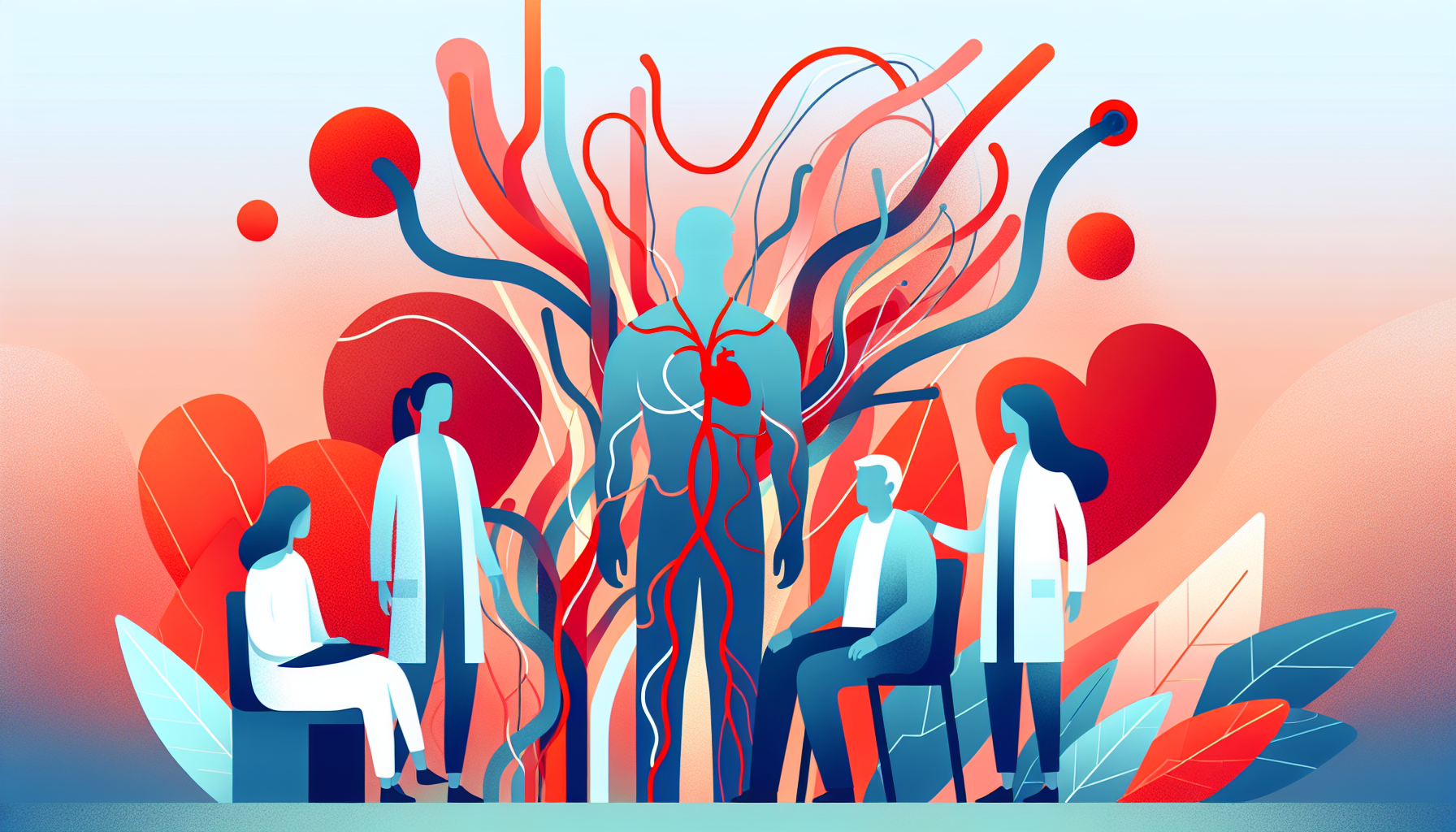Does Mounjaro Affect Fertility?
Understanding Mounjaro and Its UsesMounjaro is a prescription medication commonly prescribed for managing type 2 diabetes. It belongs to a class of drugs that help regulate [...]
Read More
Medically reviewed by Jerome Albert Ecker | MD, Assistant Professor of Medicine, Duke University - Durham, NC on March 18th, 2024.
Takayasu's arteritis is a rare condition that causes inflammation in large and medium-sized arteries, primarily affecting the aorta and its branches. This disorder is most commonly diagnosed in young women between the ages of 15 and 35, with a peak incidence between ages 20 and 30, but it can affect people of all ages and backgrounds. In this article, we'll explore the symptoms, causes, diagnosis, and treatment options for Takayasu's arteritis.

Arteritis is a general term referring to the inflammation of arteries, which are blood vessels that carry blood away from the heart to the rest of the body. A related condition called vasculitis involves inflammation of blood vessels in general, including both veins and arteries.
Approximately half of all people with Takayasu's arteritis experience a sense of generalized illness, which may include:
Low-grade fevers
Swollen glands
Anemia
Dizziness
Night sweats
Muscle aches
Arthritis
Weight loss
Reduced pulses
Blood pressure differences
Arm or leg pain with exercise
Stroke
As the disease progresses, patients may experience fatigue, pain, or aching in the arms or legs due to reduced blood supply. In rare cases, decreased blood flow can lead to a stroke or heart attack. Some patients may also experience abdominal pain after meals or high blood pressure due to reduced blood flow to the intestines or kidneys, respectively.
The exact cause of Takayasu's arteritis is unknown. However, research suggests that a combination of genetic and environmental factors may play a role in the development of this condition. While Takayasu's arteritis most commonly affects young Asian women, it can occur in people of all ages and ethnic backgrounds.
Diagnosing Takayasu's arteritis involves a combination of factors, including:
A complete medical history and physical exam to rule out other illnesses with similar symptoms
Imaging studies, such as MRI, X-rays, and angiograms, to determine the location and severity of vessel damage
Blood tests
The presence of a bruit, an unusual sound caused by turbulent blood flow through narrowed blood vessels
Unlike other forms of vasculitis, a biopsy is often not practical for diagnosing Takayasu's arteritis due to the risks associated with surgery on large blood vessels.
Corticosteroids, often called "steroids," are the most common treatment for Takayasu's arteritis. These medications can be dramatically effective, but they may only be partially effective for some people. As symptoms improve, doctors gradually reduce the dosage of steroids to minimize side effects.
In cases where steroids alone are not sufficient, immunosuppressive drugs like methotrexate may be used. Approximately 50% of patients who had previously relapsed can achieve remission and discontinue steroids when these additional medications are used.
In some cases, biologics like Tocilizumab or Infliximab are used.
Patients with Takayasu's arteritis may also require treatment for high blood pressure, as inadequate control can lead to serious complications like stroke, heart disease, or kidney failure. In some cases, surgical interventions such as angioplasty or bypass operations may be necessary to restore normal blood flow or repair aneurysms.
With proper recognition and treatment, the mortality rate for Takayasu's arteritis in the U.S. and Japan is only about 3% after an average of five years with the disease. Approximately 25% of patients treated at The Cleveland Clinic have an entirely normal lifestyle, while another 25% have had to make some adjustments to their activities. About half have had to modify their jobs, and a small number have become occupationally disabled.
Although Takayasu's arteritis is a treatable disease, and most patients improve, many have to deal with partially or completely disabling consequences. Close follow-up with a doctor is essential to monitor the side effects of medications used to treat the condition.
For more information on Takayasu's arteritis and other forms of vasculitis, visit the following reputable sources:
Early recognition and aggressive anti-inflammatory treatment can prevent this potentially devastating arterial disease from causing strokes, heart attacks, or limb-threatening complications. The key is catching it before permanent arterial damage occurs, as initial symptoms often masquerade as general fatigue or minor aches. If you're experiencing unexplained fatigue with arm pain during activity or notice blood pressure differences between your arms, Doctronic can help evaluate these concerning symptoms quickly.
Understanding Mounjaro and Its UsesMounjaro is a prescription medication commonly prescribed for managing type 2 diabetes. It belongs to a class of drugs that help regulate [...]
Read MoreUnderstanding Hydrocortisone Uses and DosagesHydrocortisone is a versatile medication primarily used to reduce inflammation and suppress the immune system in various [...]
Read MoreUnderstanding Zepbound and MounjaroWhen managing type 2 diabetes, patients often face a variety of medication options. Zepbound and Mounjaro are two such options gaining [...]
Read More